|
Mind Control And Murder CultsThe Assassins were members of an Islamic secret society born in the 11th century.Still shrouded in mystery nearly a millennium after its birth, members of the sect were known at the time as Nizaris. The name "assassin" was a European word coined to describe the sect. Its exact origin is uncertain, but legend holds that it meant "user of hashish," the drug rumored to be the secret of the Nizaris' fanatical and even suicidal fervor.
The loyalty of the Assassins was legendary, and even suicidal in its intensity. The most famous story told of the sect dates to the 12th century, and various versions of the tale run through the Crusades. As related by Islamic scholar Bernard Lewis in his landmark study, The Assassins: The word (assassin) first appears in the chronicles of the Crusades, as the name of a strange group of Muslim sectaries in the Levant, led by a mysterious figure known as the Old Man of the Mountain, and abhorrent, by their beliefs and practices, to good Christians and Muslims alike. [...] It's not difficult to see why the September 11 attack inspired a resurgence of interest in the cult, as publishers rushed to rebrand academic books on the Nizaris with titles like "The Assassins: History's First Terrorists," usually to the consternation of authors. Most of that initial surge quickly faded. For all their similarities, there were seemingly insurmountable obstacles that caused many to consider comparisons between the Assassins and al Qaeda to be more glib than accurate. But the practice of terrorism is as much about illusion and misdirection as it is about fear. At first glance, the comparison seemed valid. On closer examination, it didn't hold water. The reality is complicated. Without resorting to a simplistic view of "they're both Muslims and they both kill people," al Qaeda and the Assassins have interesting similarities in structure, theology, and history*. It's useful to begin with the structure. Both al Qaeda and the Assassins employ an a organizational chart drawn in concentric circles. The result is an organization that is extraordinarily efficient at manipulating its adherents, creating a loyalty so intense that soldiers gladly die for the cause, while entrenching an inner management that is extremely resistant to attack.
*The religious parallels are the subject of al Qaeda as Ecumenical Outreach. The historical relationships are covered in Then And Now: The Missing Link.
Circular StructuresSimilarities between al Qaeda and the Assassins are not surprising or significant in themselves. Both groups are religiously oriented secret societies on a wartime footing. It's natural that there would be some parallels. The question is how deep the similarities run.
These groups usually have a large outer circle, often consisting of people with only a casual interest in the society's goals. Within that circle are a finite number of increasingly exclusive degrees, made up from agents and members who are increasingly informed about the society's real goals and methods. Circular organizations are more resistant to assault than pyramid hierarchies, in part because their internal mechanisms are hidden. The point of a pyramid is to create a clear path to a visible apex, a single leadership position that dominates the structure. The pyramid structure is therefore largely transparent. Standing at the foot of a pyramid, you can see its tip. Circular structure hides and protects the center. Standing on the surface of a globe, you cannot see its center. It's difficult to strike at the center without burrowing into the structure. There are other advantages. Gravity, for instance, works to the advantage of a spherical structure, but acts to the detriment of a pyramid. When you attack the structure of a globe, everything falls in toward the center, consolidating strength at the middle and healing ruptures in the exterior, a mechanism which experts see working in al Qaeda as it recovers from a U.S. onslaught. In a pyramid, however, the vitally important apex rests on top of the subsequent layers. By hacking away at the middle, or the bottom, the structure can become so destabilized that the apex may fall.
The Organization of the AssassinsThe Assassins, or the Nizaris, were a sect of Shi'a Islam founded in the 11th century by a charismatic religious leader named Hasan I-Sabbah. Educated in Egypt, Hassan formally founded the order around 1090, when he took control of the Persian fortress of Alamut (in what is now Iran).Religion and subterfuge went hand in hand for the Assassins from their earliest days. Legend has it that Hassan won Alamut by infiltrating the fortress with his missionaries, who converted and recruited the castle's guards to Hasan's version of Ismaili Islam. By the time the lord of the castle figured out what was going on, Hassan was already inside the fortress and in control of its army. Hassan reportedly paid off his predecessor to clinch the deal without a sword being drawn. According to legend, the Assassins famously relied only on their daggers to kill. They were said to be fanatically committed to their leader, Hasan, and his successors as Grand Master, and they considered martyrdom a great honor. Legend states that Nizari leaders drugged the Assassins with hashish in order to brainwash them into believing they would enter paradise as martyrs, but it's unclear whether that really happened. It's certainly feasible. The Assassins earned their fame with a series of political murders that helped reshape Persia and Syria during their heyday. The murders were accomplished by stealth and infiltration, and the Nizaris were said to have agents within the courts of many regional kings. They struck Muslims and non-Muslims alike, as it suited their needs. Although they are perhaps most known for their fight against the Crusaders, their "honor roll" of victims included more Muslims by far.
In the outer circles, the information revealed is often pragmatic -- codes, martial techniques, secret signals and the like. Deeper into the organization, the initiation information invariably becomes more important and more shocking, usually consisting of powerful religious content. Each degree of the Assassins' represented an increasingly sophisticated theological view, with corresponding increases in the presumed power and freedom of the initiate. The Nizaris employed a form of missionary known as a dai. The dais covertly traveled to Sunni Muslim areas and sought to convert selected individuals to their brand of Shi'ite Islam, known as Ismailism. Dais often practiced taqiyya, a religiously sanctioned form of deception under which they were permitted to disguise themselves as believers in non-Nizari sects or even to pose as non-Muslims. At one point, the entire sect virtually converted from Shi'a Islam to Sunni Islam in order to secure a political alliance and the safety of the Assassin fortresses. They reverted when the guise was no longer expedient. Much of the Assassins' own literature was destroyed when Alamut finally fell to a Mongol invasion in the 13th century. That defeat marked the end of the Assassins' visible power in the world. Many of the surviving documents are accounts written by the sects' Christian and Sunni enemies. Because of this, the description of the sects' inner workings should be taken with a large grain of salt. But enough data exists to approximate the beliefs and functions of each degree. While the surviving accounts likely don't reflect the exact beliefs of the ancient Assassins, they are probably close enough to be instructive. The following descriptions are culled primarily from Secret Societies by Arkon Daraul, and The Milita of Heaven, by James Wasserman. Their accounts were in turn derived from Crusader records and Sunni Muslim heresiologists. The source texts were written in the 14th century, but cited a supposed source from the 10th century. The outermost circle of the church, the first circle, relied on classic cult recruiting techniques to draw a prospect into the sect. Once a likely prospect was selected by the dai, the teacher launched an attack on his preconceptions, pointing out inconsistencies in the Koran and logical errors in mainstream theology. While undermining the recruit's confidence, the dai simultaneously indicated that the answers to these troubling questions lay within the sect, at a deeper level of initiation. And the subsequent degrees were designed to deliver on that promise. In the second through fourth degrees, initiates were introduced to increasingly complex explanations of the symbolism and prophecies of the Koran, including secret symbols, number codes and magical practices.
In the fifth and sixth degrees, the instruction became densely esoteric, including teaching on astrology, kabbala, the calendar and Greek philosophy. More significantly, at the sixth degree, initiates were freed from the constraints of Shariah law, the fundamental code of behavior underlying Islam, which includes detailed instructions on fasting, prayer, pilgrimage and a multitude of other issues. The denial of Shariah was the ultimate in heresy, binding the initiate to the cult and alienating him profoundly from his fellow Muslims. Sixth degree initiates could become dais in their own right. It was an exclusive level of initiation. Few made it so far, and even fewer moved beyond. Sixth degree initiates could also be members of the class of Assassin warrior known as a fidai, an Arabic word meaning "faithful." The fidais are the classic Assassins, as the word is understood in modern usage. Fidais were dagger-wielding killers who would strike at the command of their Grand Master, embracing martyrdom without showing fear or doubt. No one knows how many fidais there were at any given time, which only made them more effective. They would spend years infiltrating the courts of regional powers, where they would simply wait for the command to strike -- no matter how long it took. Seventh and eighth degree initiates were the elite among dais. In the seventh and eighth circles, initiates were exposed to distinctly Gnostic concepts, including a Manichean view of a universe in which God and his creation are divided into two principles. This was a radical departure from the extraordinarily intense monotheism practiced in the outer Islam. The learnings at this level continued to become more and more esoteric, having less and less to do with the mundanities of daily life. Importantly, at the eighth level, according to Daraul, "The proselyte is also taught that a Prophet is known as such not by miracles, but by his ability to construct and impose in a kind of system at once political, social, religious, and philosophical." The eighth degree opened the door to a level of aspiration that was fantastically blasphemous to Muslims outside the sect, the notion that one could aspire to reach the status of a Prophet. The ninth degree, the final circle of initiation known to the outside world, was purportedly the introduction of the Antinomian heresy to the Islamic world. Those initiated to the ninth degree learned the ultimate secret -- that there is no sin -- and became pure Gnostics in the sense that all further wisdom was to be received directly from God. It's difficult to judge how truly accurate the accounts of the inner circles of the cult might be. After all, these accounts were written by the enemies of the Nizaris. It's not at all unusual for the victors in a religious conflict to characterize their enemies as Antinomians. And only a handful of extremely devoted and loyal subjects ever reached the seventh, eighth and ninth circles. Still, there is a powerful poetry to the quote famously attributed to the sect's founder, Hasan I-Sabbah, summing up the ultimate secret of the Nizaris' ninth circle:
"Nothing is true, everything is permitted." That saying could be inscribed on the coat of arms for Al Takfir Wal Hijra, the Islamic cult that dominates the leadership of al Qaeda. (See al Qaeda as Ecumenical Outreach.)
The Organization of al Qaedaal Qaeda also uses degrees of initiation, but they aren't as clearly delineated to the outside world.With the perspective of history, it's easier -- and safer -- to speculate about the Assassins' secret teachings and methods. In the event of capture, Al Qaeda members are taught to encumber interrogation, providing mountains of trivia while misdirecting on key points. Nevertheless, a fairly coherent picture has emerged after years of arrests and indictments, with their mountains of evidence, testimony and seized documents. We can only estimate, but we can estimate fairly well. As with the Assassins, the exact boundaries of the degrees may differ slightly, but al Qaeda does use a few clearly defined levels of engagement, starting with casual alliances to running to the most fanatical of true believers, some of whom are still unknown to the West.
According to the 9/11 Commission's final report, al Qaeda's "structure included as its operating arms an intelligence component, a military committee, a financial committee, a political committee, and a committee in charge of media affairs and propaganda. It also had an Advisory Council (Shura) made up of Bin Ladin's inner circle." Breaking the network down to its areas of functioning is useful, but only to a point. Most governments perform all of these functions (sometimes excepting religion), but a Communist dictatorship is dramatically different from a representative democracy which is different from a constitutional monarchy. The question is: How do the components interact? What is the shape of the network? Rather than trying to cram al Qaeda into a Western corporate model, as many observers do, it makes more sense to view it as a secret society with a circular structure of degrees, like the Assassins or the Freemasons. The degrees identified here should not be considered a complete list, nor should they necessarily be treated as the formal hierarchy used internally by al Qaeda. This overview represents one "best guess" attempt to divine the structure of al Qaeda from the outside. Much like the Assassins, al Qaeda identifies potential recruits through an evangelical religious program (see al Qaeda as Ecumenical Outreach). Some of these potentials become freelance operatives, financial supporters or simply sympathizers. This, the first degree is the outer ring of al Qaeda, consisting of casual helpers and interested parties. Often, these individuals will never move deeper into the group. There is no initiation at this level. Many members of the "media committee" fall within this circle, including a cadre of Webmasters, systems analysts and hackers who help disseminate terrorist messages.
Where the ancient Assassins had remote fortresses to indoctrinate new initiates, al Qaeda has camps. Qaeda training camps are fortified and as secure as any location in the modern world. Here, initiation into the core al Qaeda organization takes place. These camps are found all around the globe -- in Afghanistan, Pakistan, the Philippines, Malaysia, the Sudan and Saudi Arabia, just to name a few of the most prominent locales. Some camps are even located in Europe and the United States. There were a few small training sites in Iraq before the U.S. invasion; now the camps are much bigger and more numerous. In addition to their practical utility in teaching the finer points of firearms, explosives and poisons, these camps served as isolation tanks. While in training, new recruits simply drop off the face of the earth. It's a classic cult technique, separating potential recruits from family and friends, moving them into an insular community with few outsider influences and strictly controlled communication with the outer world. According to accounts from captured operatives, these second-degree initiates are given false names (or real names that belong to other people). They are explicitly instructed on how to fit into Western societies, even at the expense of strict adherence to Shariah law.
At this level, members can be considered the equivalent of the fidais within the Assassins. Second-degree initiates can be selected for martyrdom missions, or sent to live abroad as a sleeper agents. These sleepers are sometimes exempted from Shariah requirements in order to successfully blend in. After indoctrination is complete, recruits are usually sent back out into the world. The second-degree members of al Qaeda are the footsoldiers of global terrorism. They carry messages and supplies around the world. They assist acts of terrorism, large and small. They perform reconnaissance, move money, and perform dozens of other pragmatic tasks. The third degree of al Qaeda consists of lieutenants, who direct the actions of the fidais. These trusted operatives are more thoroughly trained than the footsoldiers. Often, they specialize in certain kinds of terrorism, such as explosives or chemical weapons. Members of the third circle are military and political strategists; they often originate proposals for terrorist operations, sometimes working under general guidelines provided by the innermost circle. Terrorism experts sometimes refer to this circle as al Qaeda's military committee. Members of this circle have included Mohammed Atta, Khalid Shaikh Mohammed and probably Ramzi Yousef. Third degree members are initiated, but they do not swear loyalty to bin Laden.
Religion is key to advancement past the third degree, and thus evangelists, recruiters and financiers represent the fourth degree of al Qaeda membership. It's virtually impossible to separate the three functions. As practiced by al Qaeda, these roles are interdependent and interchangeable. These operatives are al Qaeda's dais. From a strategic viewpoint, the fourth degree is perhaps the most important level of the organization. The dais carry an evangelical message, sweetened with money and fortified with guns. In the modern world, dais work the networks and systems of mainstream Islam to their advantage. They have substantially infiltrated the world of Islamic charities, which provides multiple benefits to al Qaeda. Missionary status allows the dais to travel freely under the guise of charitable and religious work, and funds donated with good intentions, out of legitimate Islamic generosity, are misdirected to support al Qaeda's definition of jihad. There are at least dozens of fourth-degree initiates in al Qaeda's network; there may be several hundred or even thousands. Like the dais of the Assassins, these operatives are trained to hide themselves in sophisticated ways. Generally, only the major operators ever become visible. Likely members of the fourth degree include men such as Mohammed Jamal Khalifa, bin Laden's brother-in-law and allegedly a top Qaeda financier; Mohamed Loay Bayazid, a Qaeda moneyman accused of trying to buy uranium for a nuclear weapon; and Enaam Arnaout, head of the Benevolence International Foundation, an Islamic charity shut down by Western authorities as a major al Qaeda money laundering operation. Bayazid and Khalifa are still at large; Arnaout pleaded guilty to charges not related to al Qaeda and is serving time in a U.S. prison.
While it's sometimes tough to keep score, it appears the U.S. and its allies have barely penetrated the fourth degree, including the financial and political committees. There have not been consistent reports of a formal initiation ceremony for second and third degree initiates, although one may well exist. In contrast, Western intelligence has learned that fourth degree initiates are required to formally swear loyalty to bin Laden (or another member of the innermost circle). This ritual is a variation on a traditional Islamic oath of loyalty called bayat (or bay'a) in Arabic. According to GlobalSecurity.org, a Washington, D.C.-area think tank, "bayat is the ritual of accepting (a) shaykh as guide and coming under the protection of the lineage of the order. The number of actual members pledging bayat is unknown, but al-Qaida is said to have trained as many as 5,000 militants in camps in Afghanistan and perhaps Indonesia." As observed above, not everyone who passes through the camps swears bayat. According to the Final Report of the 9/11 Commission, Khalid Shaikh Mohammed told his captors he refused to pledge fealty to bin Laden, despite being pressured to do so. While that may be a self-serving account, his "job" function fits with the third degree of the organization. While all second-degree operatives appear to have sworn bayat, some members of lower degrees also take the oath. What this means, to be strictly accurate, the actual gradation of degrees in al Qaeda is almost certainly more complex than the estimate presented here. bin Laden's personal bodyguards reportedly are required to swear bayat. Little is known of the actual ceremony. According to the Chicago Tribune, one captured fidai-level operative told the FBI that while he was at a training camp in Afghanistan, a group of initiates took the oath in a mountaintop ritual. (As a second-degree initiate, he was not among them.) The innermost circle of al Qaeda is its leadership, the fifth degree. The leadership of al Qaeda is commonly referred to as a council, or as the "Shura Council," a description first used in 1998's U.S. v bin Laden criminal case.
Osama bin Laden and Ayman al-Zawahiri are members of this innermost council. Beyond them, a handful of names are known and others may be inferred. Mullah Omar, leader of the Taliban, is likely one of these core leaders. These leaders are considered warriors, and they directly contribute to Qaeda's military and financial functions, but their public importance hinges on religious authority. Some likely members of the Shura Council have been apprehended by the West, without significantly damaging al Qaeda's ability to function. The "blind Sheikh," Omar Abdel Rahman, currently in U.S. custody for his role in plot to destroy New York City landmarks, was likely part of al Qaeda's fifth degree leadership at the time of his arrest. Other names associated with this core leadership include Saif al Islam el Masry, currently believed to be an inmate at Camp X-Ray, and Mohammed Atef and Abu Ubaidah al Banshiri, both believed to be deceased. There appears to be one key difference between the Assassins' structure and the visible framework of al Qaeda -- centralized leadership. There is every reason to suspect that Osama bin Laden is not crucial to the survival and operations of al Qaeda. Hassan I-Sabbah, on the other hand, is believed to have been the absolute ruler of the Assassins, in both its inward and outward modes.
The Psychology Of Structure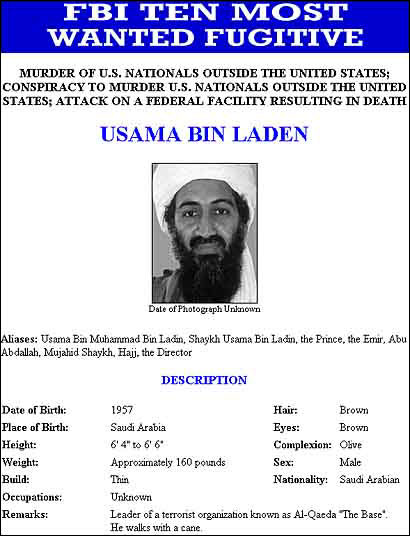 All these gradations of knowledge and authority, combined with the specific training and initiation techniques, amount to a quick course in Mind Control 101. Both the Assassins and al Qaeda use tried and true methods to manipulate their members -- the techniques of a cult. The degreed initiation structure, and techniques applied to members entering each circle, is designed to create specific mental conditions that bind them more and more completely to the cult.
All these gradations of knowledge and authority, combined with the specific training and initiation techniques, amount to a quick course in Mind Control 101. Both the Assassins and al Qaeda use tried and true methods to manipulate their members -- the techniques of a cult. The degreed initiation structure, and techniques applied to members entering each circle, is designed to create specific mental conditions that bind them more and more completely to the cult. Robert Lifton, an expert in cult psychology, outlined three defining characteristics of a cult in a 1981 article for The Harvard Mental Health Letter:
1) a charismatic leader who increasingly becomes an object of worship as the general principles that may have originally sustained the group lose their power; 2) a process I call coercive persuasion or thought reform; 3) economic, sexual, and other exploitation of group members by the leader and the ruling coterie. It's difficult to be sure, when so little is known about the fifth degree leadership, but it appears that there is not a solitary leader of al Qaeda akin to the President of the United States (or the Grand Master of the Assassins). But that's a purely structural consideration. On a practical level, Osama bin Laden is clearly the charismatic personality that al Qaeda revolves around, as Hassan I-Sabbah was to the original Assassins. The prevailing importance of martyrdom as a virtue in al Qaeda ensures that he can continue to perform that function, even in the event of his death. The cultish element of exploitation is arguable, given the enormity of the political and religious motivation that motivates many members of al Qaeda. In the final analysis, however, the recurrent use of suicide bombers to advance a political agenda is probably enough to qualify as Lifton's third criterion. That leaves us with the process of "coercive persuasion." Lifton details this phrase with admirable specificity. Coercive persuasion includes the following elements, according to Lifton:
Both the Assassins and al Qaeda mix these techniques to maximum effect. The Assassins operated from remote fortresses in rural areas of Persia and Syria. While inside, initiates of the order were intensely manipulated. Consider this account from Daraul's Secret Societies:
The ancient Art of Imposture, by Abdel-Rahman of Damascus, gives away another trick of Hasan's. He had a deep, narrow pit sunk into the floor of his audience-chamber. One of his disciples stood in this, in such a way that his head and neck alone were visible above the floor. Around the neck was placed a circular dish in two pieces which fitted together, with a hole in the middle. This gave the impression that there was a severed head on a metal plate standing on the floor. In order to make the scene more plausible (if that is the word) Hasan had some fresh blood poured around the head, on the plate. Complete milieu control allows you to pull off tricks like this, and the element of mystical manipulation is plain to see. While there are no reports of al Qaeda using quite so colorful techniques, the training camp setting is another example of milieu control. From deep in the mountains of Afghanistan, there is no opportunity to call home, check in with friends and family, or watch the game at a local pub. The end goal of these techniques is identical for both the Assassins and al Qaeda -- breeding fanatics. Both organizations used the techniques of a mystical secret society in order to command absolute loyalty and submission from their followers. That submission is then employed to advance a purely religious goal of sweeping scope -- a forcefully evangelical conversion of the entire world to their specific visions of Islam, and the extermination of those who stand in their way. Next: al Qaeda as Ecumenical Outreach |
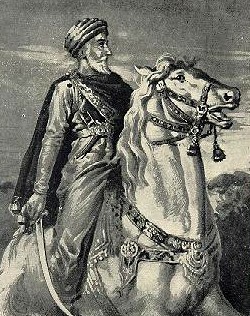 Ruthless and stealthy, the Assassins were skilled in the use of fear and violence for political manipulation and to advance their radical Islamic theology. Their operatives would go deep undercover, sometimes waiting years for an order to strike. Members of the sect used only daggers, adding a ritual mystique to their work. They kept a roll of honor, listing the names of martyred assassins and their victims.
Ruthless and stealthy, the Assassins were skilled in the use of fear and violence for political manipulation and to advance their radical Islamic theology. Their operatives would go deep undercover, sometimes waiting years for an order to strike. Members of the sect used only daggers, adding a ritual mystique to their work. They kept a roll of honor, listing the names of martyred assassins and their victims.  Governments tend to be organized in pyramids. An individual rules from the top, then a series of bureaucratic layers that fatten and sprawl as you get further and further from the leadership. In contrast, religious cults and secret societies tend to be organized in circles.
Governments tend to be organized in pyramids. An individual rules from the top, then a series of bureaucratic layers that fatten and sprawl as you get further and further from the leadership. In contrast, religious cults and secret societies tend to be organized in circles. 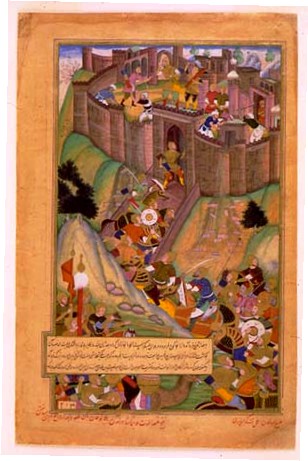 The Assassins were structured as a secret society, or in religious terms, a mystery school. In this sort of structure, the flow of information is controlled by layers. A sect has different levels of initiation, circular layers that proceed from an outer shell to an inner core. As one progresses through the organization, one is initiated into each layer, or degree, with a ritual that culminates in the sharing of new and secret information.
The Assassins were structured as a secret society, or in religious terms, a mystery school. In this sort of structure, the flow of information is controlled by layers. A sect has different levels of initiation, circular layers that proceed from an outer shell to an inner core. As one progresses through the organization, one is initiated into each layer, or degree, with a ritual that culminates in the sharing of new and secret information. 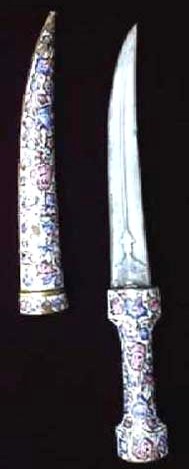 In addition to unfolding levels of knowledge, the revelations of each degree further estranged the initiates from mainstream Islam, undermining and eventually flatly denying both Shi'ite and Sunni beliefs, and denying the truth of the Koran.
In addition to unfolding levels of knowledge, the revelations of each degree further estranged the initiates from mainstream Islam, undermining and eventually flatly denying both Shi'ite and Sunni beliefs, and denying the truth of the Koran. 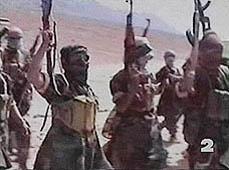 From the outside looking in, it appears al Qaeda's degrees of initiation are arranged by function, rather than religious revelation. It's quite likely that this appearance is misleading or incomplete, but it provides a starting point for analyzing the terror network.
From the outside looking in, it appears al Qaeda's degrees of initiation are arranged by function, rather than religious revelation. It's quite likely that this appearance is misleading or incomplete, but it provides a starting point for analyzing the terror network. 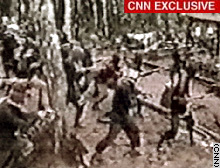 Some of these potentials are identified as having promise, and invited to attend indoctrination, which culminates in entry to the second degree. Everyone invited at this level is male, although a handful of women have worked their way into the organization through various unique avenues.
Some of these potentials are identified as having promise, and invited to attend indoctrination, which culminates in entry to the second degree. Everyone invited at this level is male, although a handful of women have worked their way into the organization through various unique avenues. 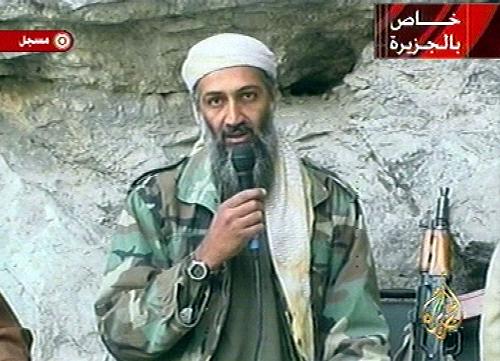 Members at this level usually meet with one or more members of the charismatic inner circle of al Qaeda, figures like bin Laden or Zawahiri. These meetings are important mostly for their psychological impact.
Members at this level usually meet with one or more members of the charismatic inner circle of al Qaeda, figures like bin Laden or Zawahiri. These meetings are important mostly for their psychological impact. 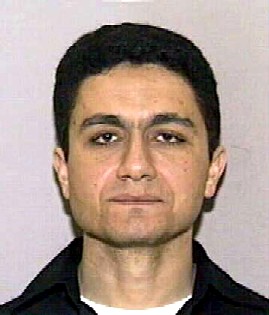 When he was at large, KSM was commonly referred to as "al Qaeda's No. 3 leader." This was true in the sense that as a third degree member, he was two steps from the center. But many others share that status. Khalid's energy and creativity enhanced the appearance of his stature. But was not associated with al Qaeda's religious and theological activities. His role, while vitally important, was limited.
When he was at large, KSM was commonly referred to as "al Qaeda's No. 3 leader." This was true in the sense that as a third degree member, he was two steps from the center. But many others share that status. Khalid's energy and creativity enhanced the appearance of his stature. But was not associated with al Qaeda's religious and theological activities. His role, while vitally important, was limited. 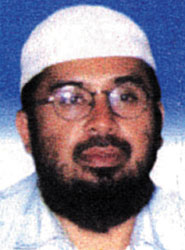 Other operatives within this fourth circle may have include
Other operatives within this fourth circle may have include 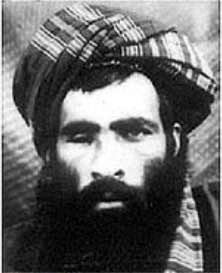 Western authorities know virtually nothing concrete about the actual leadership of al Qaeda, a testament to the efficiency of the secret society organizational structure. They don't even know the size of the Shura Council for certain, but a common guess is 20 to 30 members.
Western authorities know virtually nothing concrete about the actual leadership of al Qaeda, a testament to the efficiency of the secret society organizational structure. They don't even know the size of the Shura Council for certain, but a common guess is 20 to 30 members.